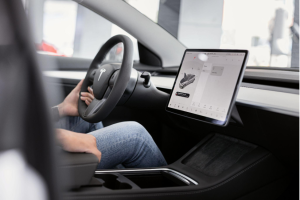Unfortunately, even the most careful and experienced motorist is not protected from the risk of being involved in an accident. Recognizing this, car manufacturers are trying to do everything possible to improve the safety of the driver and passengers during the trip. One of the steps taken to reduce the number of accidents is the development of modern active vehicle safety systems that can reduce the risk of accidents. Find out more about the latest safety technology in the automobile industry down below.
When traveling far away by car, safety is particularly important, as the road is unfamiliar and traffic regulations may differ from state to state. Before such a trip, it is essential to visit a repair service in advance to ensure that the vehicle is ready for a long journey. Alternatively, you can rent a car directly at your place of destination. In this way, you can enjoy the comfort and be sure that your ride remains secure. Due to the popularity of automobile rental services each person can find a car that suits their needs. The selection of vehicles is huge, thus you can rent a roomy SUV for the whole family at https://renty.ae/body-types/suv be mobile and travel safely.
1) Airbags for pedestrians
Airbags now save not only the driver and his front neighbor, but passengers in the rear as well. In addition, there are devices that protect knees, while special curtains help avoid hitting a pillar or glass. However, engineers created external safety systems that are under development intended to protect pedestrians from front or side impact. Upon an imminent impact, the sensor begins to inflate an airbag under the bonnet, which inflates in front of the windshield. This reduces the number of head injuries for pedestrians involved in an accident.
2) Smart light
Active safety is all about electronics, nowadays basic systems such as anti-lock brakes are installed even in the economy-class vehicles. In addition, new options are being added to the classic driver assistance systems such as blind spot monitoring, adaptive headlights and infra-red sensors. Thus, in the near future, automobile companies promise to equip cars with smart lighting, which can track not only people, but animals as well. This will be especially relevant for those who live near animal migration areas or forests.
3) Crumple bodies
In the early years of automotive manufacturing, almost all vehicle safety systems were passive as they were only triggered when an accident was unavoidable. Over the decades, automotive technologies have moved on, and now passive safety is not all about the body. Passive safety measures were taken to a new level with the advent of computers and access to crash statistics. Manufacturers have been able to program crumple zones which help avoid tragedies. There are even concept cars with smart body panels that deform on impact but are easy to reshape.
4) Emergency call
In the event of an airbag deployment following a collision, eCall automatically notifies the emergency services on behalf of the driver, but it can also be activated manually. The device uses GPS data to transmit information on the exact location of the vehicle and direction of travel at the time of the accident, and a microphone also allows the driver to communicate with dispatchers at the other end.
5) Vehicle-to-vehicle system
Along with autopilot, a vehicle-to-vehicle communication system is being developed. The smart system features constant communication between the vehicles while they are on the move. Conceptually, it is a better version of the navigator function, with users reporting traffic incidents. The difference is that the V2V will be autonomous and the signal will be transmitted irrespective of the availability of cellular service.
Modern vehicles are becoming increasingly safer for drivers and passengers. However, the important thing to remember is that safety on the road depends not mainly on automation, but on the driver’s attention. Wearing a seat-belt and obeying the rules of the road are still the main guarantees of safety.

